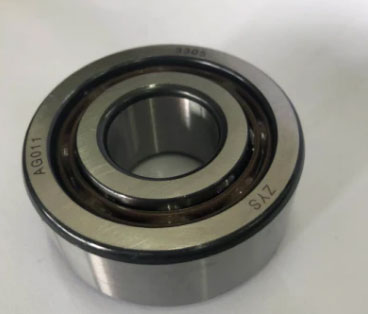Home / News / CNC Bearing Noise: Causes, Diagnosis, and Remediation
CNC Bearing Noise: Causes, Diagnosis, and Remediation
Introduction
CNC (Computer Numerical Control) machines are widely used in various industries for their precision and efficiency in producing high-quality parts. However, one common issue encountered in CNC machines is bearing noise, which can affect the machine's performance and the quality of the finished products. This article will discuss the causes of CNC bearing noise, methods to diagnose the issue, and possible remediation steps to ensure optimal performance.

Causes of CNC Bearing Noise
There are several factors that can contribute to bearing noise in CNC machines, including:
Wear and Tear: Bearings are subject to wear and tear over time, which can lead to noise generation. Worn bearings may have uneven surfaces, increased internal clearance, or damaged rolling elements, which can cause vibrations and noise during operation.
Insufficient Lubrication: Proper lubrication is essential for the smooth functioning of bearings. Insufficient or incorrect lubrication can result in increased friction, leading to excessive heat generation, wear, and noise.
Contamination: The presence of foreign particles such as dust, dirt, or debris in the bearing can cause increased friction and noise. Contaminants can also lead to premature bearing wear and reduced performance.
Misalignment: Improper alignment of the bearing components can result in uneven load distribution, causing increased stress on the bearing and generating noise.
Manufacturing Defects: Manufacturing defects in the bearing, such as irregularities in the raceway or rolling elements, can also cause noise during operation.
Diagnosis of CNC Bearing Noise
To diagnose bearing noise in CNC machines, the following steps can be taken:
Visual Inspection: Perform a visual inspection of the bearing and surrounding components for any signs of wear, damage, or contamination.
Auditory Inspection: Listen for any unusual noises during operation, such as grinding, squealing, or clicking sounds, which may indicate bearing issues.
Vibration Analysis: Use vibration analysis tools, such as accelerometers or vibration meters, to detect abnormal vibrations that may be associated with bearing noise.
Temperature Monitoring: Monitor the temperature of the bearing during operation, as excessive heat generation may indicate lubrication issues or other problems that can cause noise.
Disassembly and Inspection: In some cases, it may be necessary to disassemble the machine and inspect the bearing components for signs of wear, damage, or contamination.
Remediation of CNC Bearing Noise
To address bearing noise in CNC machines, the following remediation steps can be taken:
Replace Worn or Damaged Bearings: If the bearing is excessively worn or damaged, it should be replaced to prevent further issues and ensure optimal performance.
Improve Lubrication: Ensure that the bearings are properly lubricated with the correct type and amount of lubricant, following the manufacturer's recommendations.
Clean and Decontaminate: If contamination is found to be the cause of bearing noise, clean the bearing and surrounding components to remove any foreign particles.
Realign Components: If misalignment is detected, realign the bearing components to ensure proper load distribution and reduce stress on the bearing.
Address Manufacturing Defects: If manufacturing defects are found to be the cause of bearing noise, contact the bearing manufacturer to address the issue and seek a replacement if necessary.
Conclusion
CNC bearing noise can negatively impact machine performance and product quality. By understanding the causes of bearing noise and implementing appropriate diagnosis and remediation steps, operators can maintain the efficiency and reliability of their CNC machines, ensuring the production of high-quality parts.
- Previous: Angular Contact Spindle Bearings: Design, Advantages, and Applications
- Next: CNC Bearing Replacement: A Step-by-Step Guide to Ensuring Optimal Performance













